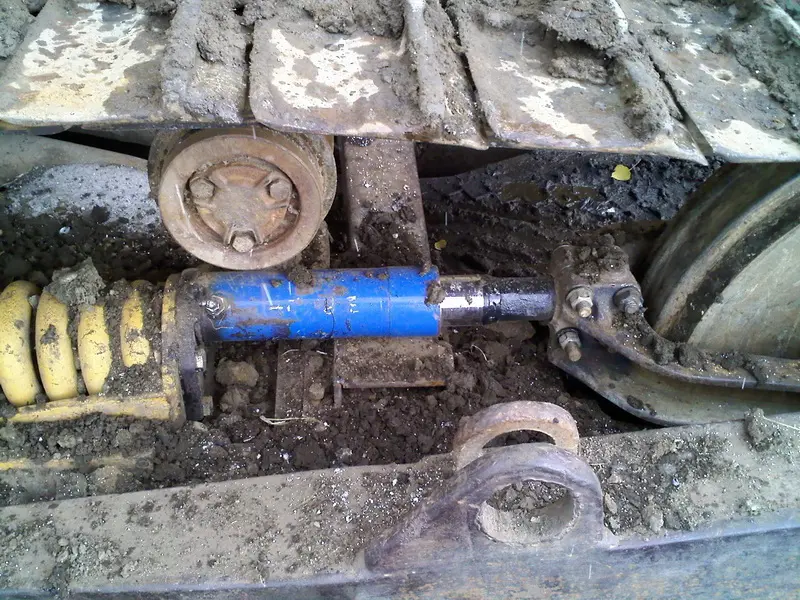
That's cool! I'd love to get some details on your design.
does that utilize your spring?
Looks good😊 😊
Was a time when these were a standard aftermarket offering......may still be a limited market.
Yes it utilizes the spring. What I did is took a 3 point hitch lift cylinder from a 276 Versatile tractor (single acting and good for 2800 psi). I cut a 5/8 plate to fit the end of the spring and took 3" of the end of the original shaft. Next cut the ears of both ears of the ends of the cylinder. Welded the whole thing up, threw it in and completely wore my arm out with a grease gun.
The thing I'm worried about before I go on to the next side is the movement of the front idler up and down if it damages the cylinder. All seems well so far though.
I believe I would add a protective sleeve welded onto the remains of the old adjuster screw that goes back over the chromed rod far enough to telescope around the cylinder fairly tight. Keep that space full of grease and maybe wrap the sliding joint with a piece of innertube or some such. Then your rod and the cylinder bore inside the rod seal will be in better shape when you need to collapse the adjuster.
What bore is the cylinder?
The front idler shouldn't move around a lot on the track frame. If it does, there's some worn parts there. They can come out of the track frame if worn very bad.
Bending of the assembly is a concern and would be hard on a single seal piston.
The Cat system uses a longer piston with two guide sleeves......and still can get into a bind with worn parts.
Also a picture of the rest of the Cat adjuster for consideration/comparison.
The Rod on the cylinder is about 1 3/4" about the same size as the old adjuster rod. Yes there is definitely some worn parts on this cat, but it's still a ways from falling out of the track frame.
The cylinder itself is pretty beefy, it'll last for a while, my major concern is the back of the cylinder tearing off of the plate. As far as the chrome goes, it seems the new cats have the adjuster out in the open.
Thanks for the diagrams Old Magnet, that's interesting how it all sits back in the spring. It would have been nice that way then you could keep that guide over the hard bar. I figure having this way and a guide would have been hard on the cylinder though.
vanlon - The biggest single problem you'll face with the modification, is the pounding up and down of the track frame as the tractor is operating. This translates to a serious amount of heavy vibrating oscillation of the cylinder, with only some of it coming from the front idler. The rest comes from the trackframe bouncing as it runs over the track chain.
This bouncing will wear out the seals in the cylinder pretty rapidly, as there's no design in the cylinder originally, to cope with this kind of pounding.
I've seen and fixed many original Cat hydraulic adjusters with severe vibratory wear, created by this pounding action of the trackframe. Most Cat hyd adjuster seals chop out due to vibratory pounding.
Add in vast amounts of dirt and dust being thrown at the seals, and you have additional grinding powder (and paste when it's wet). I'd say if you got 1500 hrs out of that design before the seals chop out, you will be doing well.
Agricultural cylinders work fine on tillage equipment and wheel tractors, where vibratory pounding isn't a problem, and they aren't living in the dirt. On a trackframe, you're into a whole lot different operating environment.
Found this old brochure😊 😊 ......check the "babe"
The original "nut type" screw adjuster wasn't all the great either and are usually found froze up or with the striped out threads most commonly due to over extension. The hydraulic units were a great improvement but they need to be pretty beefy for the job.